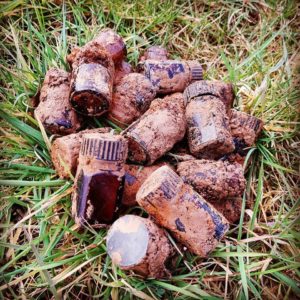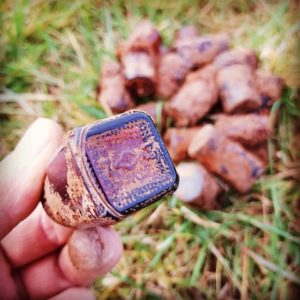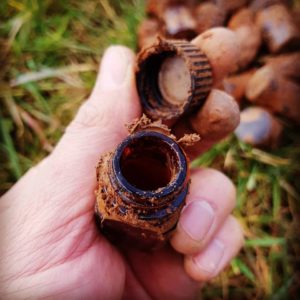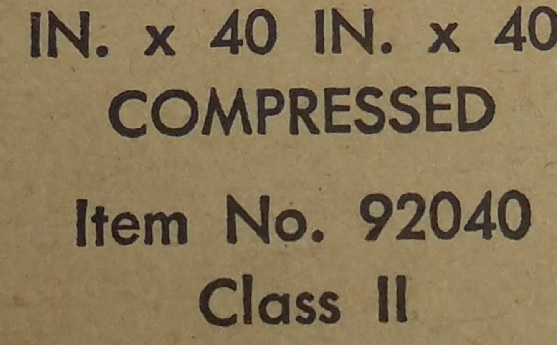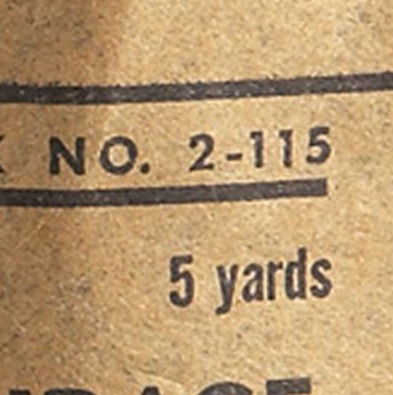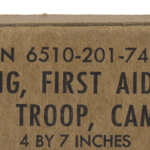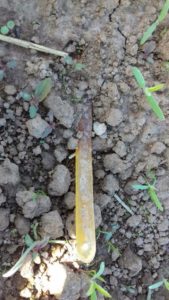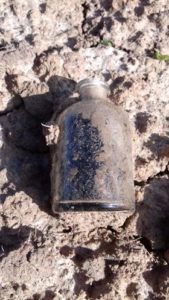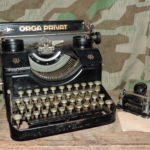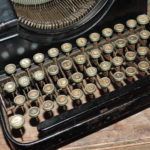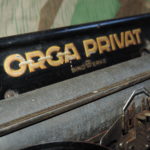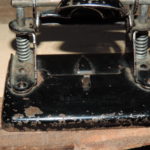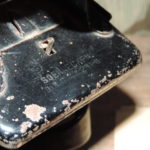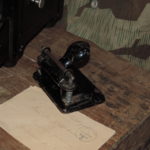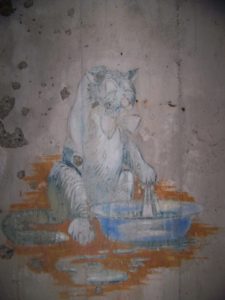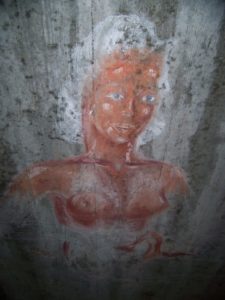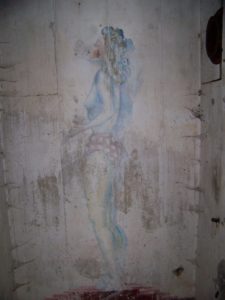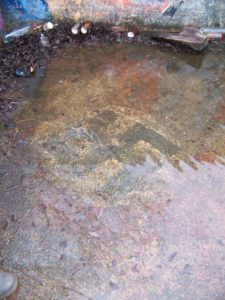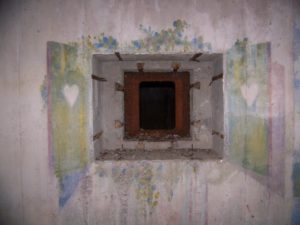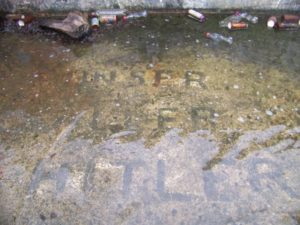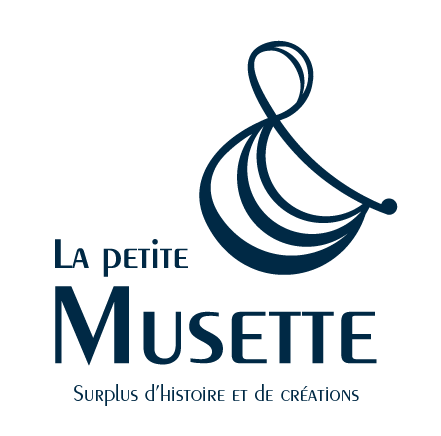by Bertrand Froger | 12 Mar 2018 | Collections, Discoveries, Life of soldiers
Harvesting flasks
It was during a small Sunday walk through the plowing fields of the Carentan sector largely beaten by the rain for long weeks, that were collected on the ground about twenty small bottles of halazone. These small round-shaped or square (Owens-Illinois) brown-colored bottles, which may also be in a colorless version, with a white and / or blue label, were supplied to US Army cardboard soldiers or with rations. -in-1 because they were filled with tablets used to make the water clean for consumption. We often find these bottles with either a plastic stopper or metal, with an inside a piece of cotton.
by Bertrand Froger | 12 Feb 2018 | Discoveries, WW2 News
In memory of Jack Shea
Jack Shea, originally from Taft, California, is a sergeant and serves with Company C of the 1st Battalion of the 506th Parachute Infantry Regiment. With his division, the 101st Airborne, he jumped to Normandy in the night of June 6, 1944 in a territory invaded by the enemy. However, the vagaries of the weather, the German anti-aircraft defense and the stress of the crews lead to many approximate drops. Dropped away from his theoretical jump zone, Sergeant Jack Shea falls a stone’s throw from the city of Carentan. After having trained so long and hardly having touched the soil of France, the Sergeant is mortally wounded. Missing the call, he will be declared dead only on the 9th and his body will be transferred to a temporary cemetery and then repatriated to the United States.
The discovery of the helmet
However, it was in 2018, that his helmet insignia so special, he had taken good care to annotate his name, the ring still bearing the stigma of that night, was found during development work performed at an individual’s home. Today, the memory of Jack Shea continues through his owner, but also through the descendants of the Hero, including his passionate nephew who has already been enormously pleased with such an unexpected discovery. We will never forget Jack’s sacrifice, nor that of his two brothers, one of whom died in action in the Pacific. (Photo credits: Bertrand Froger – Jim Shea)
by Bertrand Froger | 3 Aug 2017 | Collections, Discoveries
Items from WWII era…
It is clear that many medical effects are marketed without determining the right time of manufacture. So, you will find some tricks not to get you hurt. From 1941 to March 1944, all the items are followed by 5 digits (ex: 23080). However, during the year 1943, a new 7-digit numbering was created (ex: 23080 becomes 2308000). The first digit corresponds to the class (previously detached from the item number), the second digit to use, the next three to the item code and the last two to the variant. There is also a 4-digit numbering beginning with “2-” (type 2-308) corresponding to the US Navy over the period 1941-1946. At this point there is talk of “Stock” instead of ” item “.
…but also items from after WWII era.
Even if some effects are produced immediately after the war with the same codes as those discovered previously, a new numbering appears as early as 1947 in the form of several numbers separated by dashes. (Example: 2-308-000) until 1950. After this date, all item numbers of this type will be preceded by F.S.N. And this to the present day. To put it simply, beware of FSN mentions and numbers composed of several dashes. At least, as far as the Second World War is concerned. These effects can interest the enthusiasts of other conflicts (Vietnam, …).
by Bertrand Froger | 22 May 2017 | Collections, Discoveries, Life of soldiers
Remains of the Battle on the ground
Small Sunday walk in Normandy and we still find some small trash dragging on the ground. The bottle contained penicillin while the complete toothbrush is a Park Avenue model from Dupont, made in USA! 73 years later, the traces of the conflict are still omnipresent. Our beaches, plowshares and pastures were the scene of the greatest military operation of all time, requiring extraordinary means. Millions of men and women have crossed Europe and the world to come and repel the German invaders. Thus, many small objects of everyday life were thrown in the corner of hedges or lost during an assault. These are still beautiful witnesses.
by Bertrand Froger | 11 Apr 2017 | Collections, Discoveries, Life of soldiers
Offices in the German army
We will never repeat it enough, all military equipment is not necessarily green and does not look like a helmet or a weapon. As evidenced by these two office accessories, there are other witnesses of the Second World War passing more unnoticed. These two elements are actually a Bing-Werk typewriter and a perforator, left behind by the soldiers of the Werhmacht following the collapse of Normandy in the west of the Cotentin in the summer of 1944. After they moved, these two administrative tools were recovered on site and then stored by inhabitants of the region. It remains, however, an enigma about the origin and function of theses offices from which they come from? kommandantur? Headquarters of a unit? Military hospital? … Anyway, they are still two witnesses of an era not so far away, saved from a certain destruction.
History and Technology
The typewriter presented is an Orga Privat model from Bing-Werk whose name and initials can be seen on several parts of the machine. This series begins to be produced during the 1920s, the market demanding more efficient tools and at modest prices. Bing-Werk is a well-known German firm, known mainly for the toy industry. The patent number applied using a decal on the reverse allows to confirm a production around the years 1920/30. The keyboard in “QWERTZU” indicates a manufacture for Germany (in the absence of an AZERTY keyboard for France, or QWERTY for many English-speaking countries). “QWERTZU” is actually the order of appearance of the first 7 keys of the keyboard. As regards the perforator, this is a Soennecken and is not dated, however it is marked DRGM (Deutsches Reichsgebrauchsmuster) before a short patent number (231-8). This mention DRGM indicates a production located between 1891 and 1949 (between 1945 and 1949, under allied occupation, the use of the DRGM is continued although the Reich was annihilated) and the number confirms a production of the 30s. Two elements of offices which will complement a German administrative scenario.
by Bertrand Froger | 5 Apr 2017 | Discoveries, Places, To be visited
A fortified battery at the East of Cherbourg
It is in the North Cotentin a battery delivered to its own fate. Indeed, the Osteck point of defense, located in Carneville (Manche – 50), an important complex of dozens of concrete buildings of all types, commanded in 1944 by Major Kuppers, was the stronghold of the defense of Cherbourg. From now on, the site, invaded by the vegetation and sadly dilapidated, is far from attracting crowds of tourists. Yet, more than 70 years ago, hundreds of occupants left a memory of their passage.
The wall frescoes of Osteck
The years have passed and the more we advance in time and these memories of time will disappear. Inside the blockhouses, but also under your feet, on concrete slabs covered with moss, it is possible to discover all these paintings made by the German soldiers who occupied the premises during the Second World War. There are memories of the country, moments of joy and relaxation, but also symbols like the woman and her beauty or drawings reminiscent of the regime in place. It is a question of killing time for these soldiers, who remain men first and foremost, not all artists, but all awaiting a landing that is becoming more and more certain. The site will also fall into the hands of the Allies on June 26th, 1944.



